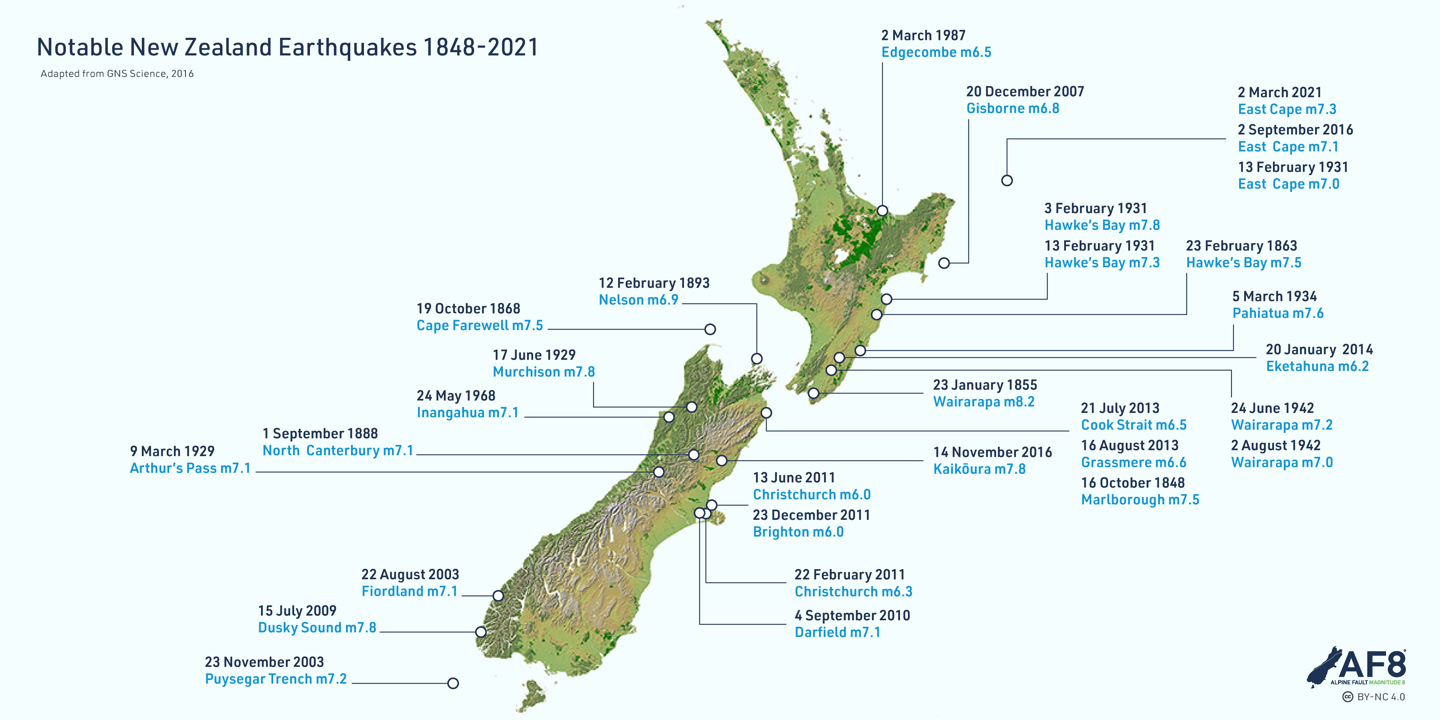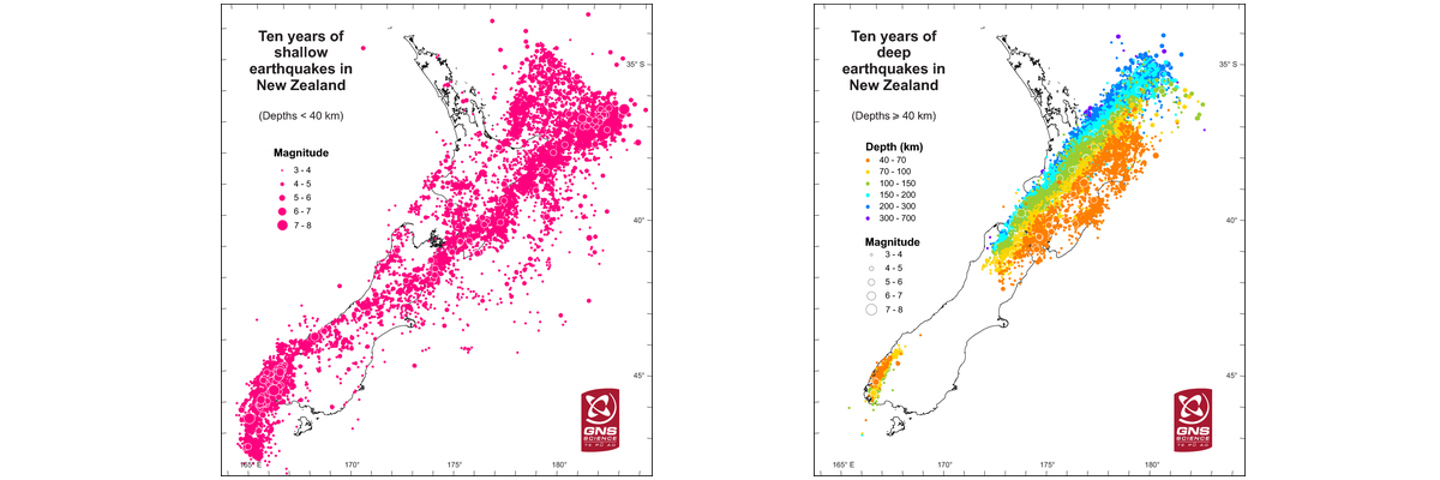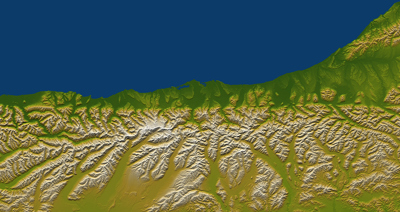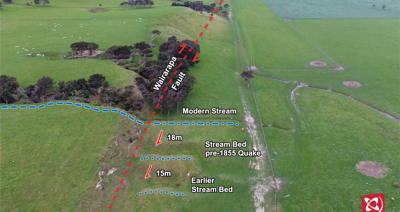What is ‘Big’ anyway?
There are two main ways to measure earthquakes: magnitude and intensity. Magnitude describes the amount of energy released and is useful for comparing events across time and space because each earthquake has one unique measure of magnitude. However, intensity tells us about the shaking and damage caused by an earthquake, which is what really matters to us mere mortals (Read more about it in How to Measure a Quake – Part 1).
Magnitude has a big influence on the intensity of an earthquake and the severity of its impacts, each step up the magnitude scale represents 32 times more energy released!
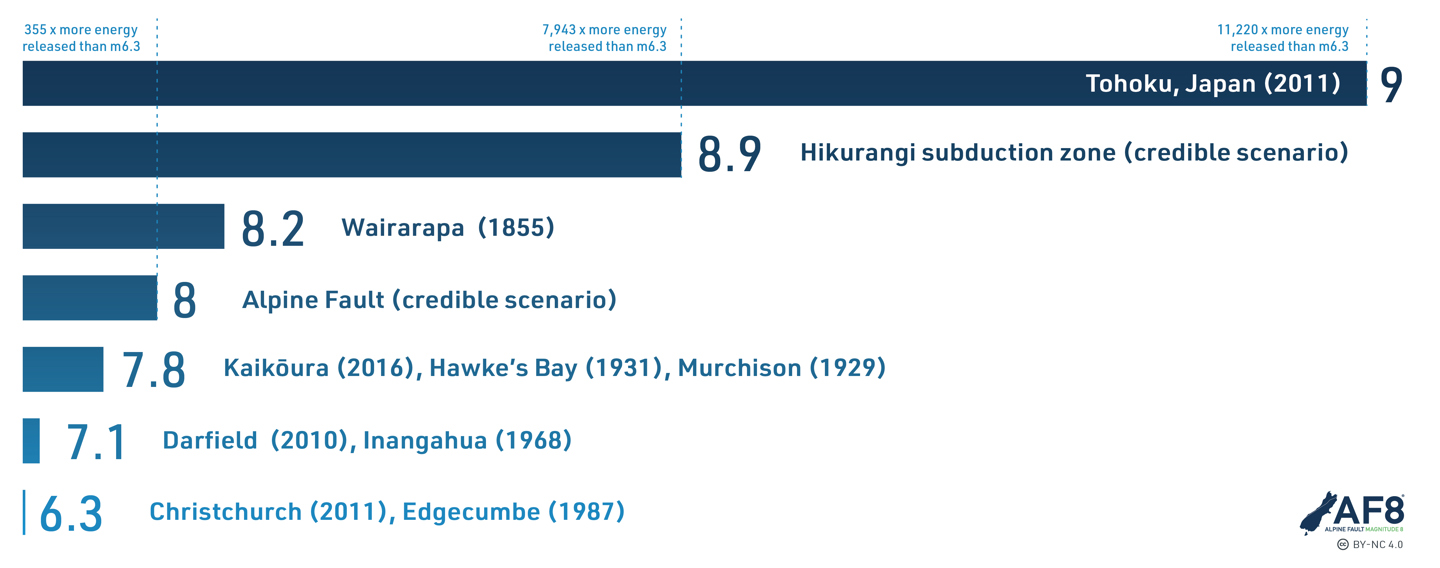
The Magnitude scale is logarithmic so a little magnitude increase equals a massive energy increase. This means that a magnitude 8 earthquake (Alpine Fault) releases 355 times more energy than a magnitude 6.3 earthquake (like the 2011 Christchurch earthquake)! Source: AF8
